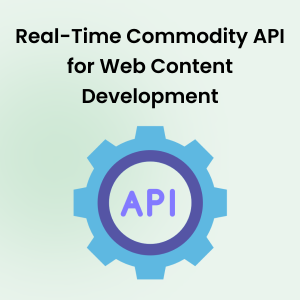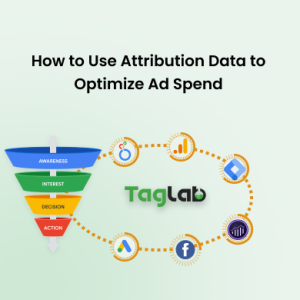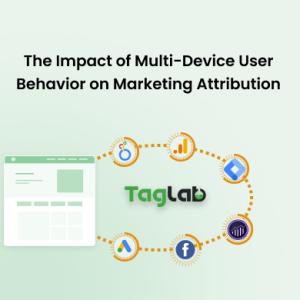Your cart is currently empty!
Last-Touch Attribution Lead Conversion Metric Definition
Posted by:
|
On:
|
Last-Touch Attribution Lead Conversion measures how effectively the final marketing touchpoint converts potential leads into customers. This metric helps businesses understand the impact of their closing-stage marketing activities, such as retargeting ads, email campaigns, or promotions, in driving conversions and turning leads into paying customers.
Detailed Explanation
What is Last-Touch Attribution Lead Conversion?
Last-Touch Attribution Lead Conversion represents the conversion rate of leads based on the final marketing touchpoint before a sale or conversion occurs. Unlike multi-touch attribution, which distributes credit across all touchpoints, last-touch attribution assigns all credit for the conversion to the final interaction with the customer, providing insights into how well the closing-stage marketing activities perform in converting leads into customers.
How it Works?
Last-Touch Attribution Lead Conversion is calculated by attributing all lead conversions to the last marketing interaction that occurred before the lead became a customer. This interaction could be a retargeting ad, follow-up email, or a promotional offer:
Lead Conversion Rate = (Number of Leads Converted / Total Number of Last-Touch Leads) x 100
This metric is useful for evaluating the effectiveness of bottom-of-funnel marketing activities, such as remarketing, promotions, or final outreach, in converting leads into customers.
Types of Last-Touch Attribution Strategies for Lead Conversion
- Retargeting Ad Conversion: Measures how effectively retargeting ads convert leads into paying customers at the final stage of the customer journey.
- Email Campaign Conversion: Tracks the effectiveness of follow-up email campaigns in converting leads after they interact with the brand.
- Direct Offer Conversion: Focuses on assessing how well direct offers or promotions sent as the final touchpoint convert leads into customers.
- Paid Search Ad Conversion: Evaluates the conversion rate of paid search ads that serve as the final interaction before a lead becomes a customer.
Illustrative Scenarios
Examples
- An online retail company runs a retargeting ad campaign targeting users who have abandoned their carts. A customer clicks on the retargeting ad and completes the purchase. The lead conversion rate for the retargeting ad is measured by tracking the number of clicks that result in conversions.
- A SaaS company sends a follow-up email to a lead who has previously signed up for a demo. The lead clicks the email link and purchases the software, resulting in a Last-Touch Attribution Lead Conversion Rate of 12% for the email campaign.
Segmentation
Last-Touch Attribution Lead Conversion can be segmented by channel, campaign type, or audience demographics. For example, segmenting by channel helps businesses determine which final touchpoints, such as email campaigns or retargeting ads, are most effective at converting leads into customers, allowing for optimized investments in high-performing campaigns.
Factors Influencing Last-Touch Attribution Lead Conversion
- Channel Selection: The choice of the final marketing channel, such as email or retargeting ads, impacts the lead conversion rate by determining how well the channel engages leads in the final stage of their decision-making process.
- Lead Quality: The quality of leads at the final touchpoint affects their likelihood of converting into customers. High-quality leads are more likely to convert.
- Offer Relevance: The relevance of the offer or content presented in the last marketing interaction can significantly influence the conversion rate of leads.
- Follow-Up Quality: The quality and timing of follow-up interactions, such as remarketing ads or promotional offers, can drive higher conversion rates by keeping the leads engaged.
- Audience Targeting: Precise targeting ensures that last-touch campaigns reach relevant leads, increasing the likelihood of converting them into customers.
Strategies to Improve Last-Touch Attribution Lead Conversion
- Optimize Retargeting Campaigns: Invest in high-quality retargeting campaigns that focus on leads who have shown strong purchase intent, offering relevant and timely content to encourage conversions.
- Enhance Email Campaigns: Use personalized and compelling follow-up email content that resonates with leads, prompting them to take the final steps toward becoming customers.
- Use Strong Calls-to-Action (CTAs): Incorporate clear and compelling CTAs in last-touch campaigns to encourage immediate engagement and increase the likelihood of conversion.
- Target High-Intent Leads: Focus last-touch campaigns on leads who have demonstrated high intent to purchase, such as those who abandoned carts or visited high-value pages, to maximize conversion rates.
- Test and Optimize Campaign Performance: Regularly test different elements of last-touch campaigns, such as messaging, offers, and timing, to determine which strategies drive the highest lead conversion rates and optimize accordingly.
Benchmark Indicators
Understanding Last-Touch Attribution Lead Conversion benchmarks by industry helps evaluate the effectiveness of final marketing interactions in converting leads into customers and set realistic goals for conversion rates:
- Technology Industry: Lead conversion rates from last-touch campaigns typically range from 15% to 25%, driven by targeted retargeting ads and follow-up email campaigns.
- Healthcare Industry: Conversion rates often range from 10% to 20%, influenced by personalized email campaigns and retargeting efforts aimed at converting patient inquiries into appointments.
- Financial Services: Lead conversion rates generally fall between 18% and 30%, with remarketing emails and direct offers playing a significant role in converting leads.
- E-commerce: Last-touch conversion rates range from 20% to 30%, influenced by retargeting ads, cart abandonment campaigns, and personalized product offers.
- Education Sector: Conversion rates can vary from 10% to 18%, driven by targeted follow-up emails and remarketing efforts aimed at encouraging prospective students to enroll.
- Real Estate: Lead conversion rates often range between 15% and 25%, with successful campaigns relying on retargeting ads, personalized offers, and follow-up communications.
Tools for Measuring Last-Touch Attribution Lead Conversion
- Analytics Platforms: Tools like Google Analytics, HubSpot, and Adobe Analytics help track lead conversions from final-touch campaigns, allowing businesses to evaluate the effectiveness of their closing-stage marketing activities.
- CRM Systems: Integrating CRM systems like Salesforce helps track customer interactions and attribute lead conversions to the last marketing touchpoint, providing comprehensive insights into campaign performance.
- Email Marketing Tools: Platforms like Mailchimp and Marketo provide insights into the effectiveness of email campaigns in converting leads based on last-touch interactions.
Common Pitfalls and Mistakes
- Overlooking Earlier Touchpoints: Focusing solely on last-touch conversion can ignore the importance of earlier interactions in nurturing leads. Combining insights from multi-touch attribution models can provide a more complete understanding of the customer journey.
- Poor Audience Targeting: Failing to target the right audience at the last touchpoint can lead to lower conversion rates and reduced campaign effectiveness.
- Low-Quality Content: Using irrelevant or unengaging content for the final touchpoint can result in low lead conversion rates, missing the opportunity to turn potential leads into customers.
- Inaccurate Tracking: Failing to accurately track the last touchpoint can lead to incorrect conversion insights, reducing the reliability of data used to optimize campaigns.
- Weak Calls-to-Action: A lack of strong and compelling CTAs at the last touchpoint can lead to missed opportunities to drive conversions and improve lead conversion rates.
Frequently Asked Questions
What is Last-Touch Attribution Lead Conversion?
Last-Touch Attribution Lead Conversion measures the percentage of leads that convert into customers based on their final interaction with a marketing touchpoint before making a purchase.
Why is Last-Touch Attribution Lead Conversion important?
Last-Touch Attribution Lead Conversion is important because it helps businesses understand the effectiveness of their final-stage marketing activities, such as retargeting ads or email campaigns, in converting leads into paying customers.
How can I improve Last-Touch Attribution Lead Conversion?
To improve lead conversion, optimize retargeting campaigns, enhance email campaigns, use strong CTAs, target high-intent leads, and test and optimize campaign performance.
What factors influence Last-Touch Attribution Lead Conversion?
Factors influencing lead conversion include channel selection, lead quality, offer relevance, follow-up quality, and audience targeting.
What are good benchmarks for Last-Touch Attribution Lead Conversion?
Good benchmarks for Last-Touch Attribution Lead Conversion vary by industry, with rates above 25% considered excellent, while rates below 10% indicate a need for improvement.



